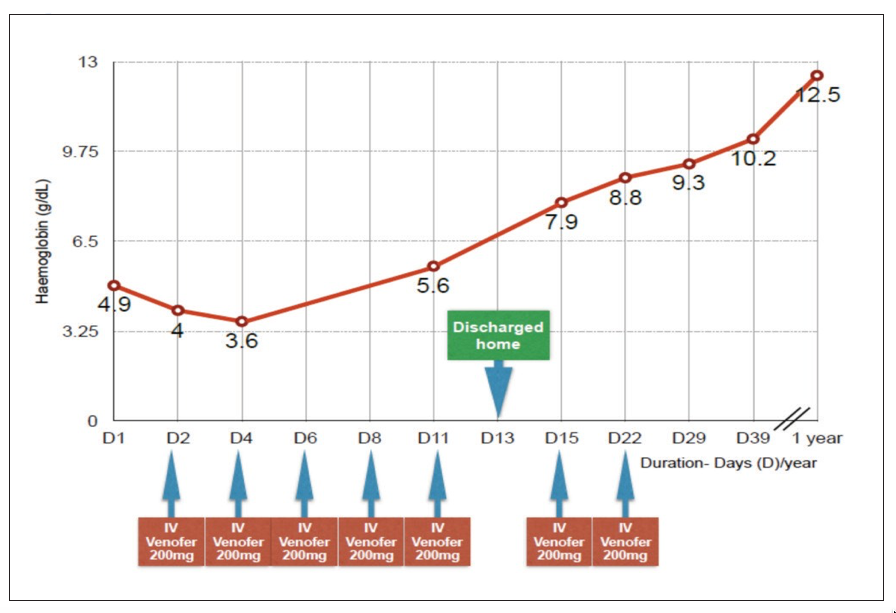SPRING 2017
ISSUE

The Society for the Advancement of Blood Management (SABM)
invites healthcare organizations worldwide to participate in this week dedicated to educating patients and healthcare professionals about patient blood management.
Download SABM's
Patient Blood Management Awareness Week 2017
Poster and Timeline
Please consider making a donation to your Society. Your donations will help us to improve the lives of people throughout the world through Patient Blood Management.

SABM 2017 Newsletter Publication Schedule
February | May | August | November
Editor
Carolyn Burns, MD
Associate Editor
Tiffany Hall, RN
Contributors
Arthur Bracey, MD
James Brown, MHA, CCP
Carolyn Burns, MD
Elizabeth Dackiw, RN
Nabil Hassan, MD
Tiffany Hall, RN
Becky Rock, RN
Kevin Wright
Meredith Reyes, MD
Ananthi Krishnamoorthy
Executive Director
Sherri Ozawa, RN
SABM Officers and
Directors
|
|
SABM Spotlight
The Modern Implementation of Patient Blood Management (PBM) in Malaysia: the Use of Intravenous Iron in Severe Anaemia with Iron Deficiency – A Case Report
Ananthi Krishnamoorthy, MD1, Farid Hadi, Dip Palliative Care2, Aruku Naidu, FRCOG3, Jameela Sathar, FRCPath4
1 Department of Rehabilitation Medicine, Hospital Raja Permaisuri Bainun, Ipoh, 2 Vifor Pharma Asia Pacific, Singapore, 3 Department of Obstetrics and Gynaecology, Hospital Raja Permaisuri Bainun, Ipoh, 4 Department of Haematology, Hospital Ampang Selangor
SUMMARY
Anaemia is a common condition in Malaysia, and is mostly due to iron deficiency. In many cases, allogeneic blood transfusion (ABT) is administered unnecessarily to treat anaemia. Patient blood management (PBM) is a concept whereby a patient becomes his or her “own blood bank”, instead of receiving ABT. The concept encompasses three pillars namely optimising erythropoiesis, minimising blood loss and harnessing human physiological reserve. We present a safe and fruitful outcome of managing severe anaemia without utilising any ABT, made possible with the PBM approach including administration of intravenous iron.
KEY WORDS: Severe anaemia, Iron deficiency, Patient Blood Management (PBM), 3 pillars of PBM, IV Iron sucrose
Patient Blood Management (PBM)
PBM is the timely application of evidence-based medical and surgical concepts designed to maintain haemoglobin concentration, optimise haemostasis & minimise blood loss in an effort to improve patient outcome.1 The PBM concept consist of three pillars; (1) Optimise erythropoiesis (2) Minimise blood loss and bleeding (3) Harness and optimise the physiological reserve of anaemia. The implementation of PBM has reduced rates of ABT, reduced incidence of infections, improved surgical outcomes, reduced length of hospital stay and reduced rates of re-admissions.2
Despite numerous successes of PBM, it is a challenge to implement it in Malaysia. Among the barriers are misguided fearful perceptions of IV Iron related anaphylaxis, lack of knowledge of PBM, the impression that it’s too complicated to use, and the alarming misconception that blood is safe, effective and cheap.
This case clearly defies these challenges and illustrates with the use of three-pillar strategy (as discussed below), how PBM can be utilised safely and easily even in severe anaemia.

Fig. 1: Haemoglobin evolution following administration of intra-venous Iron sucrose observed in one year.
Optimise erythropoiesis
Ascertaining the root cause of anaemia (of which iron deficiency is most common) and treating appropriately are key to optimising erythropoiesis. Although oral iron is first line treatment of iron deficiency, it is related to poor tolerance and takes months to replenish iron. Intravenous iron is safe and effective when rapid increase in Hb and iron supply is required. Iron sucrose was the treatment of choice due to its extensive safety and efficacy profiles.3 Another measure to optimise erythropoiesis namely erythropoiesis-stimulating agents (ESA), was not used here in view of expected high levels of endogenous erythropoietin in response to blood loss in an otherwise healthy individual.
Harness and Optimize Physiological Reserve of Anaemia
Human body develops tolerance to anaemia when acute bleeding occurs. However, each patient and organ has specific oxygen demand in a given situation. Therefore, harnessing physiological reserve of anaemia is essential and is done through careful assessment to consider aggressively providing oxygen support and possible vasopressor support especially at low Hb levels. The ischaemic neuropathy experienced by this patient might be attributed to lack of aggressive oxygenation during the lowest Hb levels, a lesson we can learn.
In conclusion, PBM offers safer approach to improve patient outcome. This case reiterates that PBM can be implemented with ease and success, and it is hoped that this example will propel the use of PBM in Malaysia.
REFERENCES
1. Society for the Advancement of Blood Management (SABM). What is Patient Blood Management? Professional definition. [cited Jan 2017] Available from https://www.sabm.org
2. Kotze A, Carter LA, Scally AJ. Effect of a patient blood management programme on preoperative anaemia, transfusion rate, and outcome after primary hip or knee arthroplasty: a quality improvement cycle. Br J Anaesth 2012; 108 (6): 943-52
3. Beguin Y, Jaspers A. Iron sucrose – characteristics, efficacy and regulatory aspects of an established treatment of iron deficiency and iron deficiency anemia in a broad range of therapeutic areas. Expert Opin Pharmacother. 2014; 15(14): 2087-103.
|
|
PBM for Patient Blood Management Section

Save the Date for SABM's Annual Meeting
September 6 – 9, 2017
Hilton & Executive Tower
Portland, Oregon
PBM Certificate Course
September 6, 2017
7:00am – 6:00pm
Annual Meeting
September 7 – 9, 2017

Consider submitting your future manuscripts in PBM for peer review and publication in this new section. The success of this endeavor will depend on the provision of material to make it lively and attractive to our colleagues and other professionals in the field.
Members Invited to Submit Papers CLICK HERE
Join SABM's Call to Action for Medicare to Expand Coverage for Treatment of Anemia!
Click HERE for detailed information about what you can do to get involved.
©2017 Society for the Advancement of Blood Management
350 Engle Street
Englewood, NJ 07631
Phone: (928) 551-6400
Fax: (877) 944-2272
EMAIL: [email protected]
|